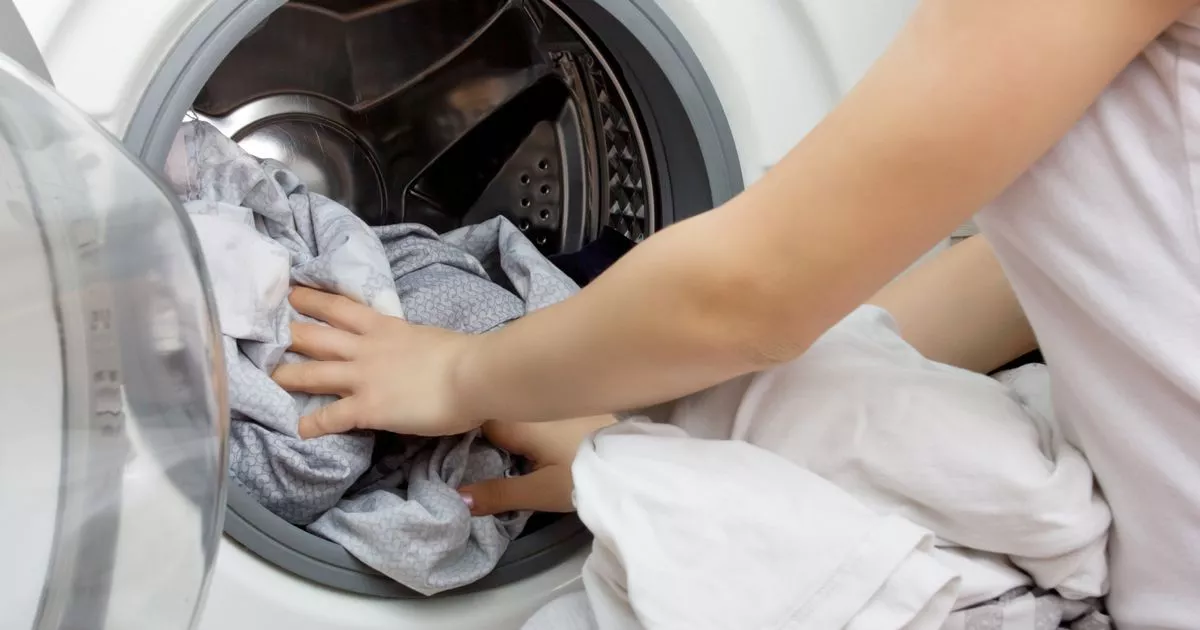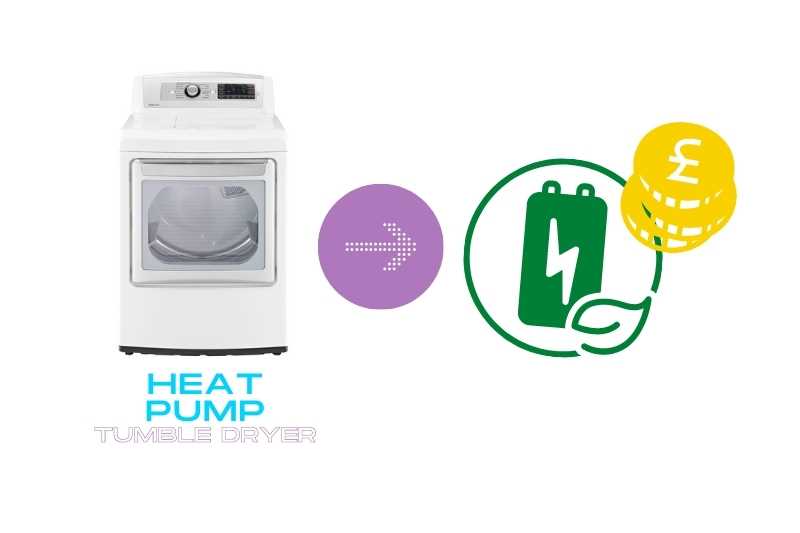




Running a tumble dryer can be a convenient and efficient way to dry your clothes, especially during the rainy and winter seasons in the UK. However, it is important to consider the cost of running a tumble dryer, as it can significantly impact your monthly energy bills. Understanding the expenses associated with using a tumble dryer can help you make informed decisions and find ways to save money.
On average, a tumble dryer in the UK uses around 4.5 kilowatts of electricity per hour, and the cost of electricity varies depending on your location and energy provider. To calculate the cost of running your tumble dryer, you can multiply the energy consumption by the cost per kilowatt-hour (kWh) of electricity in your area. It’s worth noting that the cost of electricity may also vary depending on the time of day and whether you are on a standard or economy tariff.
In addition to the cost of electricity, there are other factors that can affect the overall expenses of running a tumble dryer. The size and efficiency of the dryer, the amount of laundry being dried, and the frequency of use can all contribute to the costs. It’s also important to consider the energy efficiency rating of your tumble dryer, as a more efficient model can help reduce energy consumption and save you money in the long run.
To minimize the cost of running your tumble dryer, you can implement several strategies. Firstly, you can try to optimize the use of your dryer by only using it when necessary and avoiding over-drying your clothes. Additionally, you can take advantage of off-peak electricity rates if your energy provider offers them. Finally, it’s worth considering alternative drying methods, such as air-drying your clothes outdoors or using a clothesline indoors, which can be more cost-effective and environmentally friendly.
Understanding the Cost of Running a Tumble Dryer in the UK
Running a tumble dryer can be convenient, especially in the UK where the weather might not always be suitable for drying clothes outdoors. However, it’s important to understand the cost implications of running a tumble dryer to manage your energy consumption and expenses effectively. Here is a breakdown of the key factors to consider when calculating the cost of running a tumble dryer in the UK:
1. Energy Efficiency Rating
One of the most important factors to consider is the energy efficiency rating of your tumble dryer. Look for dryers with a high energy efficiency rating, as they consume less electricity and are more cost-effective to run in the long term. The energy efficiency rating is usually displayed as a scale from A+++ to D, with A+++ being the most efficient.
2. Energy Consumption
Check the energy consumption of your tumble dryer, which is often measured in kilowatt-hours (kWh). This information can usually be found in the product specifications or user manual. The lower the energy consumption, the less it will cost you to run the tumble dryer.
3. Electricity Tariffs
Electricity tariffs vary depending on your provider and the time of day. Some energy providers offer cheaper rates during off-peak hours, while others have fixed rates throughout the day. Consider using your tumble dryer during off-peak hours to take advantage of lower electricity tariffs and save on your energy bills.
4. Load Size
The size and amount of laundry you load into the tumble dryer can affect the overall cost. Try to maximize the use of your dryer by running full loads whenever possible. Running multiple smaller loads consecutively will consume more energy and increase your expenses.
5. Maintenance and Care
Maintaining your tumble dryer properly can help optimize its performance and reduce energy consumption. Clean out the lint filter after each use to ensure good air circulation, as clogged filters can hinder the drying process and increase energy usage. Regularly check the dryer vent and remove any lint or blockages to prevent energy wastage.
6. Alternative Drying Methods
Consider alternative drying methods, such as using a clothesline or drying rack, especially during sunny and dry weather. This can significantly reduce your energy consumption and cut down on the cost of running a tumble dryer. Reserve the use of the dryer for when it’s absolutely necessary.
Overall Cost Calculation:
To calculate the overall cost of running a tumble dryer, follow these steps:
- Find the energy consumption of your dryer in kilowatt-hours (kWh).
- Multiply the energy consumption by your electricity tariff per kWh to find the cost per hour.
- Multiply the cost per hour by the number of hours you expect to use the dryer in a week or month.
- Add any additional maintenance and care costs, such as vent cleaning or filter replacement.
By considering these factors and calculating the cost of running a tumble dryer in the UK, you can make informed decisions to manage your energy consumption and expenses effectively.
Factors That Affect the Cost
There are several factors that can affect the cost of running a tumble dryer in the UK. These factors include:
- Energy Efficiency: The energy efficiency of the tumble dryer is an important factor in determining its running cost. Energy-efficient models are designed to consume less energy, resulting in lower energy bills.
- Load Capacity: The size of the load that the tumble dryer can handle affects the cost. Larger loads require more energy and time to dry, leading to higher costs.
- Drying Time: The drying time required for a load of laundry can vary depending on the type and amount of clothes being dried. Longer drying times will result in higher energy consumption and increased costs.
- Energy Tariff: The energy tariff you are on can also impact the cost of running a tumble dryer. Different energy suppliers offer different rates, so it’s important to compare tariffs and choose the one that offers the most cost-effective option for your usage.
- Frequency of Use: The more often you use your tumble dryer, the higher your energy costs will be. It’s important to consider alternative methods of drying clothes, such as using a clothesline or drying rack, to reduce the frequency of using the tumble dryer.
- Maintenance: Regular maintenance of your tumble dryer can help ensure its efficiency and reduce energy consumption. Cleaning the lint filter, checking for clogged vents, and keeping the dryer in good working condition can help lower the cost of running it.
By considering these factors and making energy-conscious choices, you can effectively manage the cost of running a tumble dryer in the UK.
Energy Efficiency Ratings and Cost Savings
Energy efficiency ratings can play a significant role in determining the cost savings associated with running a tumble dryer in the UK. These ratings are typically displayed on the energy efficiency label of the appliance and can range from A+++ to G, with A+++ being the most energy-efficient and G being the least energy-efficient.
Choosing a tumble dryer with a higher energy efficiency rating, such as A+++, can result in substantial cost savings over time. A more energy-efficient appliance will consume less electricity, thereby reducing the cost of running the tumble dryer. It is important to note that while energy-efficient tumble dryers may have a higher upfront cost, the long-term savings in energy consumption can offset the initial investment.
Benefits of Energy-Efficient Tumble Dryers
- Lower energy consumption
- Reduced electricity bills
- Environmental sustainability
- Long-term cost savings
Calculating Cost of Running an Energy-Efficient Tumble Dryer
To calculate the cost of running an energy-efficient tumble dryer, you need to consider the following factors:
- Energy efficiency rating of the appliance
- Electricity consumption in kilowatt-hours (kWh)
- Electricity tariff in pence per kWh
Once you have this information, you can use the formula:
Total cost = Electricity consumption (kWh) x Electricity tariff (p/kWh)
Comparing Energy Efficiency Ratings

When comparing energy efficiency ratings, it is essential to consider both the initial cost of the appliance and the long-term savings potential. A higher-rated tumble dryer may come with a higher price tag, but it can yield significant savings in energy consumption and electricity bills over its lifetime.
| Energy Efficiency Rating | Energy Consumption (kWh per year) | Estimated Annual Cost (£) |
|---|---|---|
| A+++ | 200 | 30 |
| A++ | 300 | 45 |
| A+ | 400 | 60 |
| A | 500 | 75 |
| B | 600 | 90 |
It is clear from the example above that an A+++ rated tumble dryer will have the lowest energy consumption and cost the least to run annually. However, the actual cost may vary depending on individual usage and electricity tariffs.
Considering the long-term cost savings and environmental benefits, investing in an energy-efficient tumble dryer is a wise choice for UK consumers.
Tips to Reduce the Expenses of Running a Tumble Dryer
Running a tumble dryer can be expensive, but there are several tips and tricks you can follow to reduce the expenses. By implementing these strategies, you can save money on electricity bills while still enjoying the convenience of a tumble dryer.
1. Load the Dryer Efficiently:
Make sure to load your dryer efficiently to maximize its capacity. Overloading the dryer can reduce its efficiency and require additional cycles, resulting in higher energy consumption. On the other hand, underloading the dryer wastes energy as well. Find the right balance to save money on running costs.
2. Spin Clothes Thoroughly:
Before putting your clothes in the dryer, ensure they are thoroughly spun in the washing machine. The higher the spin speed, the less moisture will be left in the clothes, reducing the drying time and energy consumption of the tumble dryer.
3. Use the Appropriate Drying Program:
Modern tumble dryers offer various drying programs designed for different fabrics and moisture levels. Selecting the right program for your laundry can save energy and money. For example, using the low-heat setting for delicate fabrics can reduce energy consumption compared to the high-heat setting.
4. Clean the Lint Filter:
Regularly clean the lint filter to maintain the efficiency of your tumble dryer. A clogged filter can restrict airflow, making the dryer work harder and consume more energy. Cleaning the lint filter after every use will ensure optimal performance and reduce running costs.
5. Dry Similar Fabrics Together:

Grouping similar fabrics together can optimize the drying process. This way, all the clothes will require the same amount of drying time, preventing the need for extra cycles or overheating. Mixing heavy and lightweight fabrics can result in uneven drying, wasting energy.
6. Dry Clothes for the Minimum Required Time:
Avoid over-drying your clothes, as it can consume unnecessary energy. Instead, try drying your clothes for the minimum required time, and then hang them up to air dry naturally. This will not only save energy but also prolong the life of your clothes.
7. Utilize Off-Peak Electricity Rates:
If your electricity provider offers off-peak rates during specific hours, consider running your tumble dryer during those times. Taking advantage of off-peak electricity rates can significantly reduce your running expenses, as the cost per unit of electricity is lower during those periods.
8. Consider Using a Clothesline or Drying Rack:
Whenever possible, use a clothesline or drying rack to dry your clothes naturally. This is the most energy-efficient and cost-effective way to dry your laundry. Reserve the tumble dryer for rainy or urgent situations to further reduce its usage and expenses.
By following these tips, you can minimize the expenses of running a tumble dryer without compromising on the convenience it provides. Incorporate these strategies into your laundry routine and start saving money today!
Comparing the Costs of Different Tumble Dryer Models
Choosing the right tumble dryer can have a significant impact on your energy expenses. Here, we compare the costs of different tumble dryer models to help you make an informed decision.
1. Condenser Tumble Dryer
A condenser tumble dryer is a popular choice for many households. It works by collecting moisture from the damp clothes and storing it in a container that needs to be manually emptied. While this type of dryer is convenient, it tends to use a higher amount of energy compared to other models, leading to higher running costs.
Pros:
- Easy to use
- No need for ventilation
Cons:
- Higher energy consumption
2. Vented Tumble Dryer
A vented tumble dryer is another commonly used model. It expels the moisture from the clothes through a hose that needs to be connected to a vent or window. Vented dryers tend to be more energy-efficient than condenser dryers, resulting in lower running costs.
Pros:
- Lower energy consumption
- Good value for money
Cons:
- Requires ventilation
3. Heat Pump Tumble Dryer

Heat pump tumble dryers are the most energy-efficient option available. They work by continuously recycling hot air, resulting in lower energy consumption and significantly reduced running costs. While they may have a higher upfront cost, the energy savings over time make them a cost-effective choice.
Pros:
- High energy efficiency
- Lower running costs
Cons:
- Higher upfront cost
4. Sensor Dryer
A sensor dryer is an innovative option that uses moisture sensors to detect when the clothes are dry. This feature automatically stops the drying cycle, preventing over-drying and reducing energy consumption. While sensor dryers may have a slightly higher initial cost, the energy savings make them a worthwhile long-term investment.
Pros:
- Energy-efficient
- Prevents over-drying
Cons:
- Slightly higher initial cost
When choosing a tumble dryer, consider the type of dryer that best suits your needs and budget. While heat pump and sensor dryers may have a higher upfront cost, the long-term energy savings can make them a more cost-effective option in the long run.
| Tumble Dryer Model | Energy Consumption | Running Costs |
|---|---|---|
| Condenser | High | Expensive |
| Vented | Medium | Moderate |
| Heat Pump | Low | Cost-effective |
| Sensor | Low | Cost-effective |
FAQ
What is the average cost of running a tumble dryer in the UK?
The average cost of running a tumble dryer in the UK is around £0.35 per hour. However, this can vary depending on the specific model and energy efficiency rating of the dryer.
How can I calculate the cost of running my tumble dryer?
To calculate the cost of running your tumble dryer, you need to know the wattage of the appliance and the cost of electricity per kilowatt-hour in your area. Multiply the wattage by the number of hours you use the dryer and divide by 1000 to get the kilowatt-hours. Then, multiply the kilowatt-hours by the cost of electricity to get the total cost.
Is it cheaper to use a tumble dryer or hang clothes to dry?
Hanging clothes to dry is generally cheaper than using a tumble dryer. Tumble dryers consume a significant amount of electricity, while hanging clothes to dry is a free and energy-efficient option. However, tumble dryers can be more convenient and useful during colder and rainy months when it’s not feasible to hang clothes outdoors or indoors.
Are heat pump tumble dryers more cost-effective than regular ones?
Yes, heat pump tumble dryers are typically more cost-effective than regular ones. Heat pump dryers use a heat exchanger to recycle and reuse heat, resulting in lower energy consumption. Although heat pump dryers tend to have a higher upfront cost, the energy savings over time can make them more economical in the long run.
What can I do to reduce the cost of running my tumble dryer?
There are several ways to reduce the cost of running your tumble dryer. First, make sure to clean the lint filter regularly, as a clogged filter can reduce the dryer’s efficiency. Additionally, try to only run the dryer with a full load to maximize its capacity. Finally, consider using a lower heat setting or shorter drying time if appropriate for the type of clothing being dried. These measures can help save on energy consumption and reduce costs.
How much does it cost to run a tumble dryer in the UK?
The cost of running a tumble dryer in the UK can vary depending on several factors. On average, it can cost between 30p and 50p per cycle. This estimate is based on an average 7kg load and an energy rating of B or C. However, it’s important to note that the cost can increase if you have a larger load or a dryer with a lower energy rating.
What factors affect the cost of running a tumble dryer in the UK?
Several factors can affect the cost of running a tumble dryer in the UK. These include the energy efficiency rating of the dryer, the size of the load being dried, the duration of the drying cycle, and the cost of electricity in your area. Dryers with higher energy efficiency ratings will generally cost less to run, while larger loads and longer drying cycles will increase the cost. Additionally, areas with higher electricity prices will result in higher costs to run the dryer.













